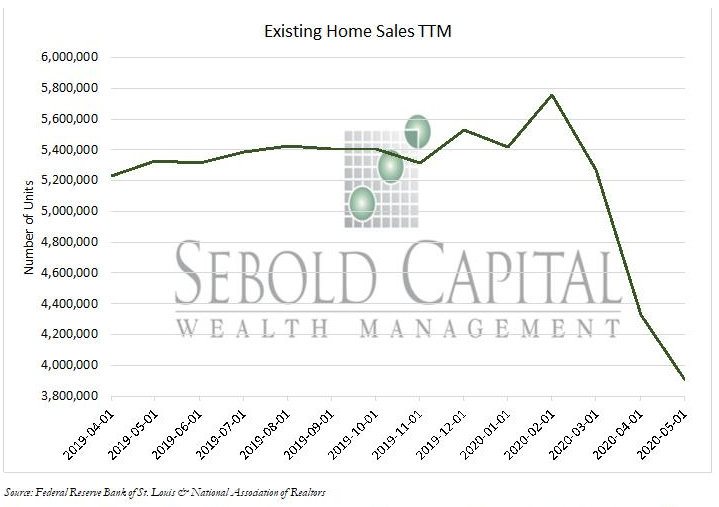Existing home sales provide the number of purchases made for homes, condominiums, and co-ops that have already been built. Existing home sales give an indication of the demand for housing. While home resales may not generate new construction jobs as housing starts do, they have a similar effect on consumer spending as people purchase items for their new home.
Existing home sales fell to a seasonally adjusted annualized rate of 3.91 million homes during the month of May. This statistic is a 9.7% decrease from last month’s annualized rate of 4.33 million and is also lower than the 4.12 million home projection that was forecasted prior to this month. Existing home sales decreased in every region this month and was led by a 13% decrease in sales in the Northeast. Sales in the Midwest, South, and West fell by 10%, 8%, and 11.1%. Almost all regions, however, had price increases. The Northeast, Midwest, and South witnessed 7.8%, 3%, and 2.1% increases in price, while the outlier, prices of residences in the West, decreased by 0.2%.
Existing home sales fell exponentially this past month as the Coronavirus pandemic continues to throw a monkey wrench in the economy. While the economy has recently signaled signs of resilience, existing home sales numbers continue to fall as a result in the lag of reporting. It can take between 30 and 60 days to finalize sale documentation and close a mortgage, and because of this, these numbers signify sales that occurred during the peak of the Coronavirus pandemic. Due, in part, to the constraints around the shutdowns in each state, potential sellers have decided to hold off on listing their properties during the traditional prime selling season. This has caused a major supply shock resulting in an 18.8% decrease in inventory across the country. The median price of properties rose to $284,600, which is 2.3% higher than the median price in May 2019. It is pretty clear that those who put their houses on the market have been the winners in the price battle.

June 22, 2020
